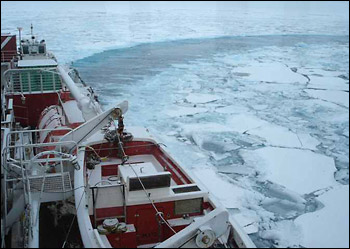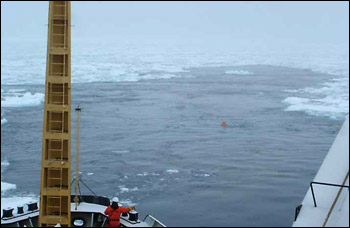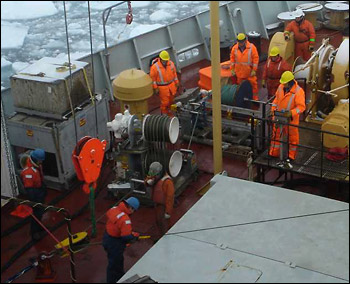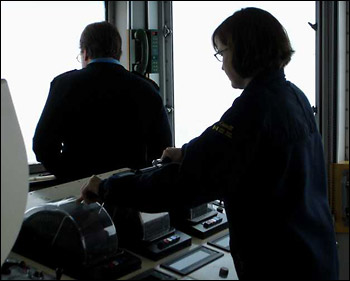Please note: You are viewing
the unstyled version of this website. Either your browser does not support CSS
(cascading style sheets) or it has been disabled. Skip
navigation.
Sarah Zimmermann, IOSAugust 31, 2006
Ready, Set, Go. With only a minute to work with, the Captain times the sweep of the ship with his message to Rick to release the mooring. He factors in the 20 second delay it will take for the signal Rick sends through the deck unit to reach the mooring release and for it to respond by letting go of the anchor. Then he adds an additional 20 second delay for the mooring to come to the surface. Rick, who is sitting in the science lab below doesn't have the same view from the bridge and has to trust the Captain's message that the timing is right. On the bridge, they are constantly adjusting the ship's position and using the 'bubbler' to keep the ice off the instruments and wire during the four hours it takes to bring everything out of the water. They also need to keep the ship clear of the bottom set of floats that rise to the surface 30 minutes after the top float. The bridge's job is easier today because the ship isn't being pushed around by the wind. Captain McNeill stands where he has a good view of the deck and the equipment in the water. To maneuver the ship, he calls out directions to the officer at the controls (telegraphs) for the three propellers and to the quartermaster at the wheel. Everything goes well! The buoy comes up in the ice free area, the instruments are brought on board undamaged and the perfect reward for being finished by coffee break is Catherine Munroe's fresh made donuts. Last updated: October 7, 2019 | |||||||||||||||||||||
Copyright ©2007 Woods Hole Oceanographic Institution, All Rights Reserved, Privacy Policy. | |||||||||||||||||||||






